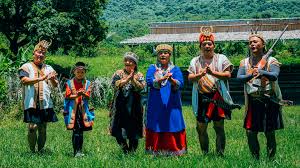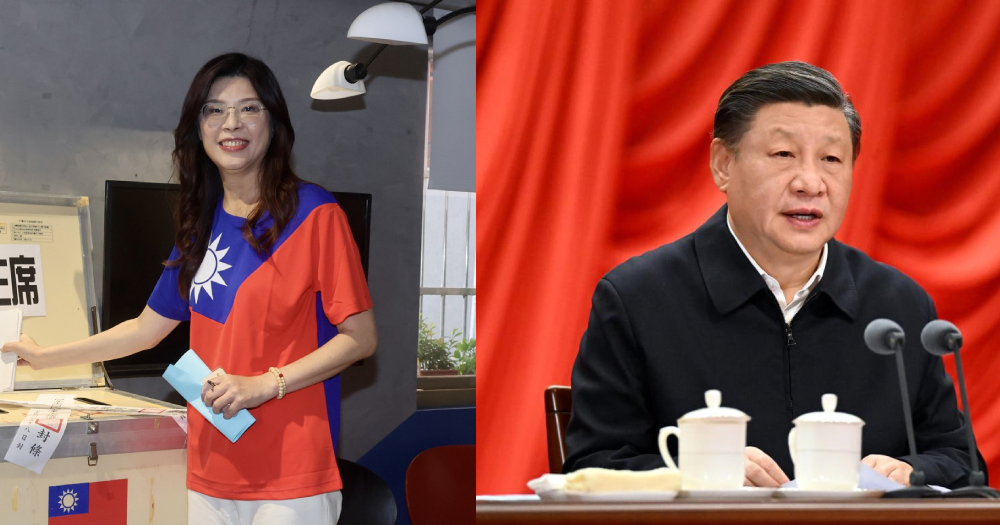by Richard Sanders, Staff Writer
The Ivatan people, who inhabit the northernmost province of the Philippines, Batanes, are believed to have originated from Taiwan. Linguistic and archaeological evidence supports this theory, indicating that the earliest settlers in Batanes were from the island of Taiwan. This migration occurred thousands of years ago, making Batanes one of the first areas in the Philippines to be settled by Austronesian peoples. As the settlers adapted to their new environment, they developed a unique culture and language that remains closely linked to their Taiwanese roots.
The Ivatan people of Batanes and the Thao people of Orchid Island share a profound historical connection that traces back to the early migrations of Austronesian peoples. This relationship not only highlights the cultural ties between these groups but also raises intriguing questions about territorial claims and identity in the context of modern geopolitics.
The Thao people of Orchid Island, also known as Lanyu, are one of the indigenous groups of Taiwan. Their culture, language, and traditions share similarities with those of the Ivatan, reflecting their common ancestry. The relationship between these two groups exemplifies the broader Austronesian migration pattern throughout the Pacific, emphasizing the interconnectedness of island cultures.
Cultural Connections and Claims
Given the shared origins of the Ivatan and Thao, one might theorize that Taiwan could lay a claim to Batanes based on historical ties. However, the modern understanding of territorial claims often complicates such assertions, as the concept of belonging has evolved significantly over the centuries. While Batanes is now an integral part of the Philippines, the cultural legacy of its Taiwanese ancestry is still evident today.
In Batanes, the Ivatan language is predominantly spoken, with very few minorities present, creating a homogenous cultural landscape. The Ivatan people maintain traditions that are reminiscent of their Taiwanese heritage, including agricultural practices, architectural styles, and communal rituals. These elements have been preserved over generations, showcasing a strong sense of identity and belonging.
Recent Efforts in Cultural Exchange
In recent years, there has been a renewed interest in fostering connections between the Ivatan and Thao peoples. Initiatives aimed at cultural exchange have emerged, promoting dialogue and collaboration that celebrate their shared heritage. These efforts often include cultural festivals, educational programs, and exchange visits, allowing both communities to reconnect with their roots and strengthen bonds.
Such exchanges not only honor the history of these two groups but also serve as a platform for addressing contemporary issues they face, such as climate change and economic development. By coming together, the Ivatan and Thao peoples can share knowledge and strategies, drawing from their ancestral wisdom to tackle modern challenges.
The historical relationship between the Ivatan people of Batanes and the Thao people of Orchid Island is a testament to the rich tapestry of Austronesian culture. Their shared ancestry provides a unique lens through which to view issues of identity, belonging, and territorial claims. As both communities engage in efforts to reinforce their ties, they celebrate not only their individual cultures but also the enduring legacy of their shared past. The future looks promising for continued collaboration, as both the Ivatan and Thao peoples strive to honor their heritage while navigating the complexities of modern life.
伊瓦坦族是居住在菲律賓最北省巴丹斯的人,據信起源於台灣。語言和考古證據支持這一理論,顯示巴丹斯的最早定居者來自台灣島。這一遷徙發生在數千年前,使巴丹斯成為菲律賓最早被南島民族定居的地區之一。隨著定居者適應他們的新環境,他們發展出一種獨特的文化和語言,與其台灣根源保持著密切聯繫。
巴丹斯的伊瓦坦族和蘭嶼的陶族之間有著深厚的歷史聯繫,追溯到南島民族的早期遷徙。這種關係不僅突顯了這些群體之間的文化聯繫,還在當代地緣政治的背景下引發了有關領土主張和身份的有趣問題。
蘭嶼的陶族是台灣的原住民族之一,他們的文化、語言和傳統與伊瓦坦族有相似之處,反映了他們的共同祖先。這兩個群體之間的關係體現了整個太平洋南島民族的遷徙模式,強調了島嶼文化之間的互聯性。
文化聯繫與主張
考慮到伊瓦坦族和陶族的共同起源,人們可能會推測台灣可以基於歷史聯繫對巴丹斯提出主張。然而,對於現代領土主張的理解往往使這些主張變得複雜,因為隨著世紀的演變,歸屬感的概念已經發生了顯著變化。儘管巴丹斯現在是菲律賓的一部分,但其台灣祖先的文化遺產至今仍然顯而易見。
在巴丹斯,伊瓦坦語是主要語言,少數民族非常稀少,形成了一種同質文化景觀。伊瓦坦人保持著與其台灣遺產相似的傳統,包括農業實踐、建築風格和社區儀式。這些元素在幾代人中得以保存,展現出強烈的身份感和歸屬感。
最近的文化交流努力
近年來,伊瓦坦族和陶族之間的聯繫受到重新關注,旨在促進文化交流的倡議陸續出現,推動對話與合作,慶祝他們共同的遺產。這些努力通常包括文化節、教育計劃和交流訪問,讓兩個社區重新聯繫他們的根源並加強聯繫。
這些交流不僅尊重這兩個群體的歷史,還為解決他們面臨的當代問題提供了一個平台,例如氣候變化和經濟發展。通過團結合作,伊瓦坦族和陶族可以分享知識和策略,借鑒他們的祖先智慧來應對現代挑戰。
巴丹斯的伊瓦坦族和蘭嶼的陶族之間的歷史關係證明了南島文化的豐富多樣性。他們的共同祖先提供了一個獨特的視角來看待身份、歸屬和領土主張等問題。隨著兩個社區努力加強彼此的聯繫,他們不僅慶祝各自的文化,還慶祝著他們共同過去的持久遺產。未來持續合作的前景看起來非常光明,因為伊瓦坦族和陶族都力求在應對現代生活的複雜性時尊重和珍惜他們的遺產。



